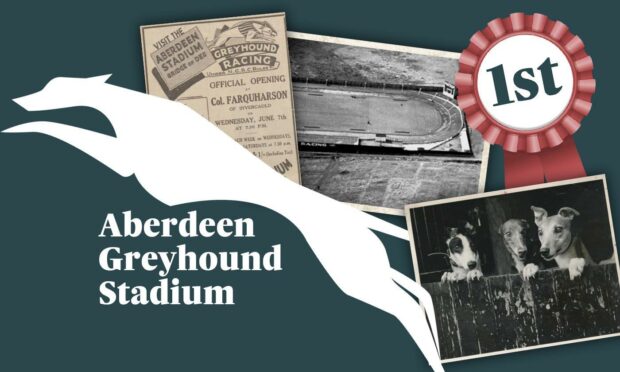Many Aberdonians will have fond memories of a night at the dogs at the greyhound stadium in Garthdee.
The sporting venue was a popular destination for a night out for 35 years before its closure in the late 1960s.
Join us as we take a step back in time looking back at the characters and tales from the track.
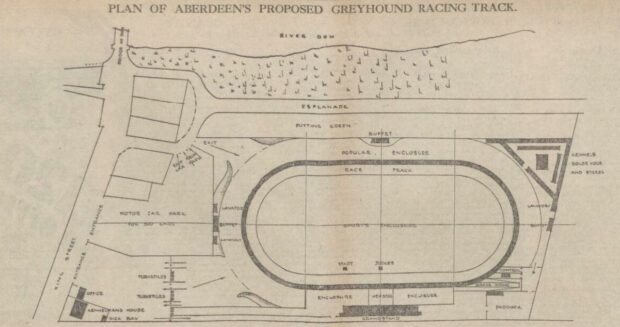
Talks about a greyhound stadium at Seaton began in the late 1920s.
But the idea of encouraging gambling on such a scale was universally condemned as a “foolish and degrading habit” by religious leaders, not just in the city, but in Scotland.
The Anti-Gambling league said the growth of gambling was “the most sinister and ominous feature of our age” and that it had already had a “stranglehold in Glasgow” which was “enslaving men, women and even children”.
Aberdeen Town Council prohibited a greyhound stadium designed by city architect T Scott Sutherland on fields of the old Seaton Estate near the Bridge of Don, but a small track was eventually built in Linksfield.
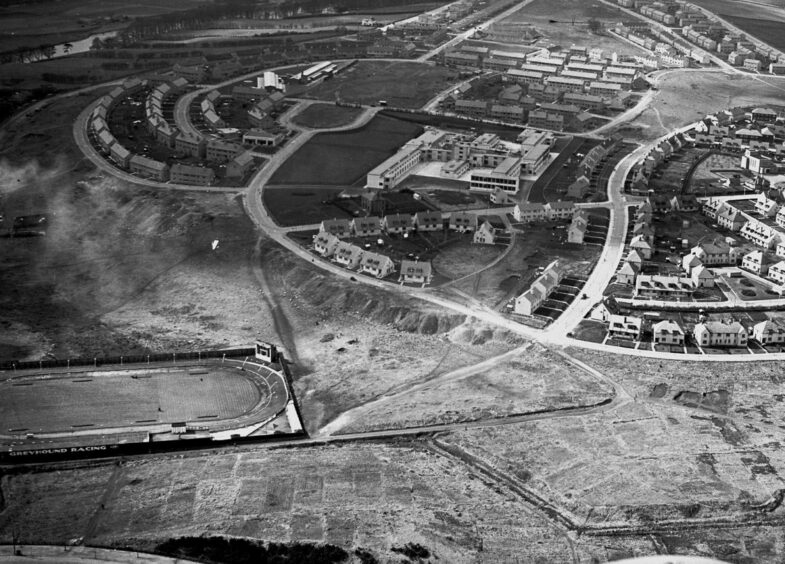
But the Scottish Greyhound Racing Company persisted with plans for a bigger venue, and came back with proposals for a track at Garthdee, formerly the ground of Argyle Football Club.
Plans were approved, and construction of the greyhound track at Bridge of Dee began in December 1932 on the site of Kaimhill Farm on the banks of the Dee.
It was hailed as “a new landmark in the realm of sport in Aberdeen” as it began to take shape.
The arena was completed the following June, and could accommodate more than 5,000 spectators to “enjoy the thrills of greyhound racing under the most comfortable conditions”.
The stadium had stands, kennels, a clubroom and offices around a 372-yard (340m) track.
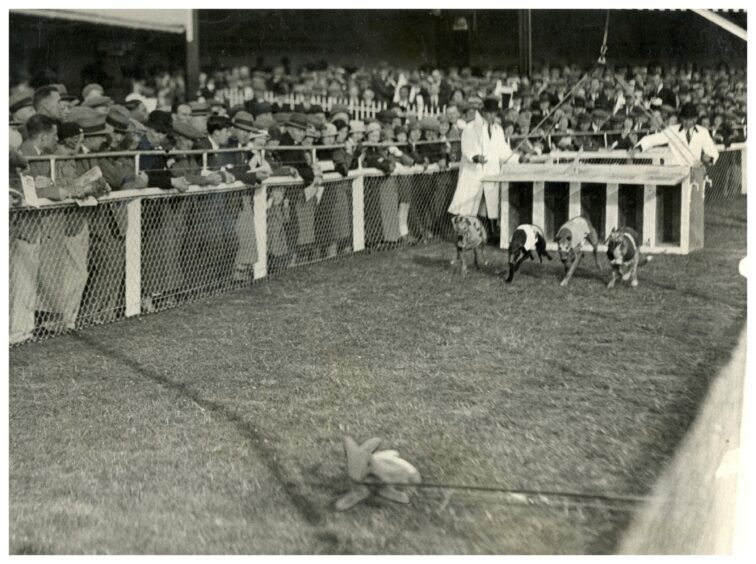
Designed for 400 and 550-yard races, the dogs chased an electric ‘hare’ along a track that was “bottomed on the straights and banked on the bends to give the best possible conditions”.
But the most commendable feature was said to be the canopy – even Aberdonians in the cheap seats had a roof over their heads.
Meanwhile, those with money to burn could spend an evening at the dogs in the comfort of the swanky, glass-fronted clubroom.
A wide, canopied verandah opposite the winning post formed the main architectural feature at the stadium.
The arena was officially opened on June 7 1933 by Colonel Farquharson of Invercauld in front of a rapturous crowd of 5,000.
The opening night was described as an unqualified success; it was reported as “a lovely evening, the sun, reluctant to depart, casting its rays upon the beautiful setting of the stadium”.
Anticipation swept through the stadium ahead of the first parade of the dogs and spectators jostled to place their bets with the tic-tac men.
Slender greyhounds were led from kennels by white-coated stewards and with the ‘hare’ released, the nimble canines were soon in hot pursuit.
The first-ever winner was 1-2 favourite Rimutaka who won by four lengths.
Other winning dogs on the night included Dubber Cross, Still Faster, Fly Home’s Secret, Star of Allah and Fighting Loafer.
Aberdonians were assured the greyhounds’ lives were happy ones and that they had the services of cooks and even masseurs at their disposal.
Each hound was taken out for a morning trot while their kennels at Kaimhill were cleaned and disinfected.
Upon their return, the greyhounds would devour a breakfast of “the finest milk, sheeps’ heads, vegetables, rusks, meal, bran and pearl barley, mixed into a substance neither too sloppy or too heavy”.
After eating, the dogs would be massaged and then enjoy periods of exercise and rest, depending on who the runners were that night.
Prior to the pistol, the competing greyhounds were dressed in their numbered jackets and paraded in full view of the public.
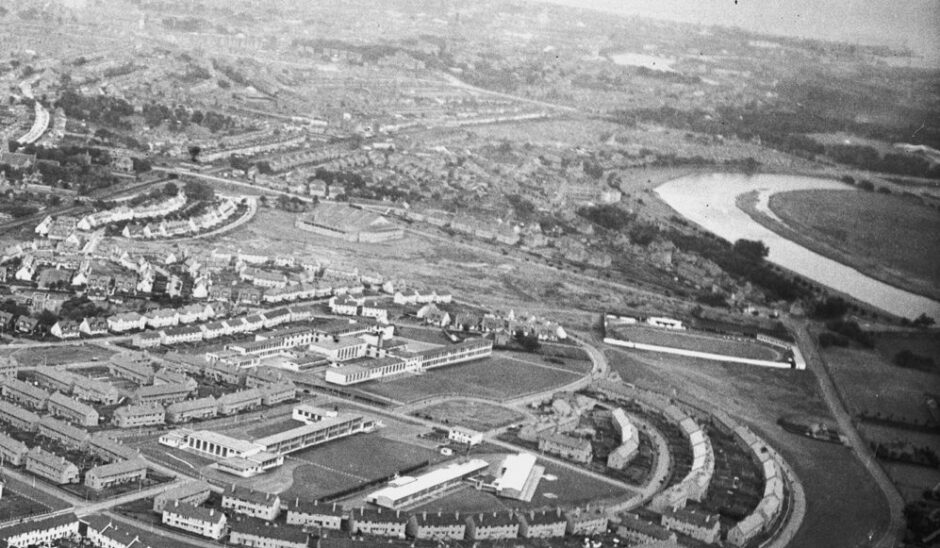
Greyhound racing in Aberdeen reached its peak in the post-war years at a time when the number of spectators was only topped by turnouts at football.
But grippy spectators were known to congregate up on the Garthdee slopes above the stadium and watch the action below for free – in those days it was known as “Misers’ Hilly”.
And some characters that Aberdonians may remember from the dogs included bookmakers Mac Davidson, Bobby Morrison and Jim Rennie, known as Swifty, who also owned some betting shops in the city.
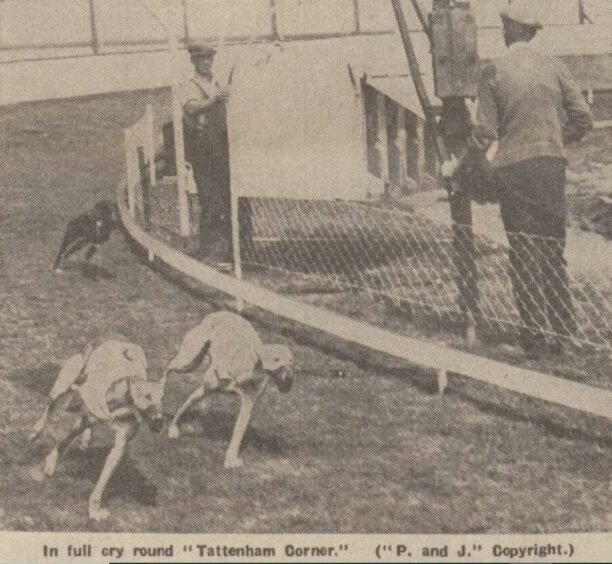
But there was huge drama in 1947 when a fire broke out at the dogs’ kennels.
It was down to the brave actions and quick-thinking of three “plucky” kennel-maids – Mary Douglas, Peggy Troup and Bunty Booth – that all the dogs were saved.
The trio dashed in and out of the smoke-filled building at Kaimhill farm to rescue the 30 dogs which had a value of £3,500.
By the 1960s, numbers at the races were dwindling and the installation of floodlights at Pittodrie Stadium in 1959 was even cited as a reason for poorer attendance at the dogs as folk backed the Dons instead.
There was a shock for punters and bookies in 1968 when stadium manager George Letts confirmed closure rumours that had dogged the track for months were true.
He felt the stadium was a valuable amenity, and said: “It’s supposed to be a holiday city and it does attract visitors at night… I would have thought something would have been done about this.”
A closure date was fixed for October 1969 and Mr Letts began the task of trying to find homes for dozens of his dogs.
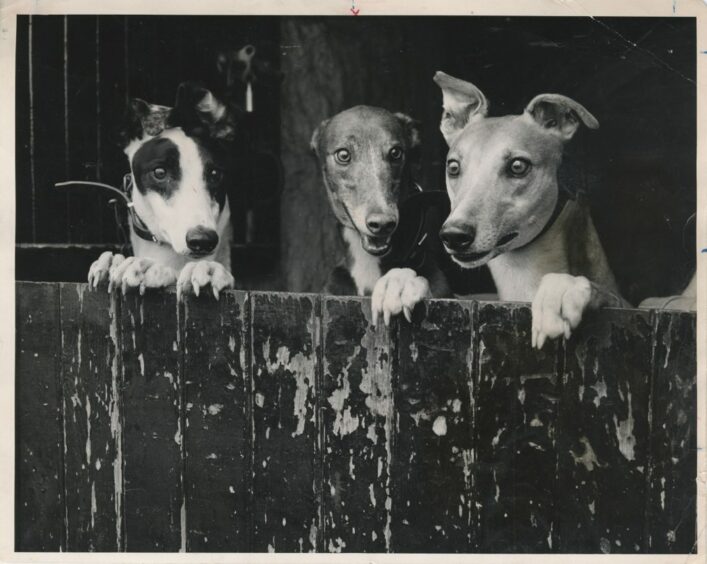
This line-up of cute canines popping up at the Old Dairy in Nigg – Don’s Black, Banner Candy and Dear Friend – were among the 70-80 greyhounds Mr Letts needed to find homes for.
He insisted that although dog racing may be doomed in Aberdeen, the hounds weren’t doomed.
The top greyhounds were sold on to other tracks to continue racing and it was hoped local families would take on the rest.
Mr Letts said in his 30 years as manager at Aberdeen Stadium, he had retired many animals to families in the north and north-east.
The stadium was eventually demolished to make way for a supermarket and these days, is occupied by the ASDA superstore.
If you enjoyed this, you might like:
